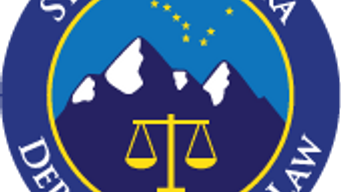While sports fans, bettors and office pool organizers turn their attention to the basketball court this March for another month of madness, the National Collegiate Athletic Association (NCAA) itself is turning its attention back to name, image and likeness (NIL) rights for student-athletes. After a series of losses culminating in the U.S. Supreme Court’s decision in NCAA v. Alston, the NCAA seemingly stepped back from aggressive public enforcement of impermissible benefits to student-athletes rules violations. Following Alston, the NCAA issued an interim NIL policy in June 2021 that largely deferred to school and conference rules and state laws.
As the NIL market exploded and NIL collectives sprouted up at virtually every Power 5 school, the NCAA publicly called for federal legislation and stories spread of the NCAA making inquiries with schools over NIL activities. Yet, other than guidance regarding the growth of NIL collectives, enforcement activity has been quiet.
Recent events, however, indicate that this is about to change.
A Presumption of Guilt?
The NCAA adopted a new bylaw (Bylaw 19.7.3) that took effect in January 2023 and creates a presumption of an NIL violation based on public circumstantial information and shifts the burden to schools to prove that a violation has not occurred. This change fundamentally alters the balance of NCAA investigations and creates a path to more aggressive enforcement. The February 2023 Public Negotiated Resolution with the University of Miami in Florida offers a glimpse of the NCAA’s more aggressive posture.
A Resolution and a Warning to Schools
The Resolution, agreed upon by the NCAA and the school, found that the head coach of the University of Miami women’s basketball team impermissibly facilitated contact between two prospects and a booster. Although the investigation did not find any direct links between NIL activities and the prospects’ recruitment or decision to enroll at the school, the NCAA and the school agreed that the school had violated NCAA recruiting rules, resulting in several penalties, including an institution probation and suspension for the head coach. The Resolution notes that the investigation commenced in 2022, prior to Bylaw 19.7.3 taking effect, indicating that the penalties would be harsher if the NCAA were able to presume a violation had occurred. The Resolution declared it a “new day” in NIL activity and cautioned that boosters have become involved with prospects and student-athletes in ways the NCAA has never seen or encountered.
The NCAA also sent a notice in February 2023 to member institutions reminding administrators that the NCAA prohibits a school from compensating athletes for their NIL rights. The note emphasized that this prohibition includes “entities acting on behalf of the institution” and stated that the universities are prohibited from providing assets to “entities engaged in NIL” activities. The notice appeared to target Texas A&M University and was issued a few weeks after Texas A&M announced that it would be launching a NIL initiative through its fundraising foundation.
A New Sheriff in Town
In the midst of this activity, the NCAA welcomed new president Charlie Baker on March 1. The former Massachusetts governor, Baker identified athletes as employees and NIL rules as two of the five key challenges facing the NCAA. Moreover, it doesn’t appear that he is going to wait for federal legislation to be the NCAA’s savior, advocating a dual track approach and stating that one of his early priorities will be to clean up the “incredibly opaque” NIL market.
Taken together, these actions signal a new phase in the post-Alston NIL era, in which the NCAA will seek to reassert its enforcement authority and tame a wild west.
The Bottom Line
- Recent moves by the NCAA signal a more aggressive approach to NIL rules enforcement.
- The change in bylaws dramatically increases the likelihood of the NCAA finding violations.
- Institutions, marketers and student-athletes need to remain vigilant and disciplined about structuring NIL deals and carefully monitoring contacts to avoid ending up as a target of the NCAA and its new president.





